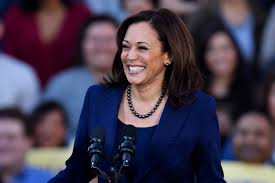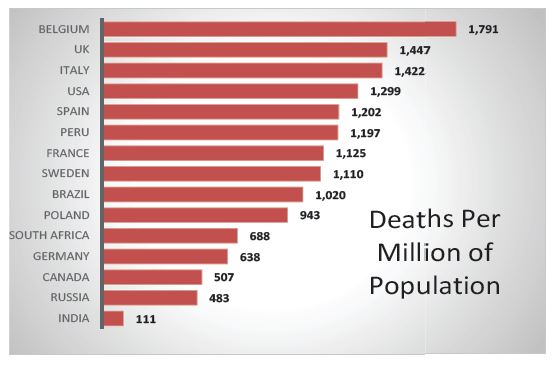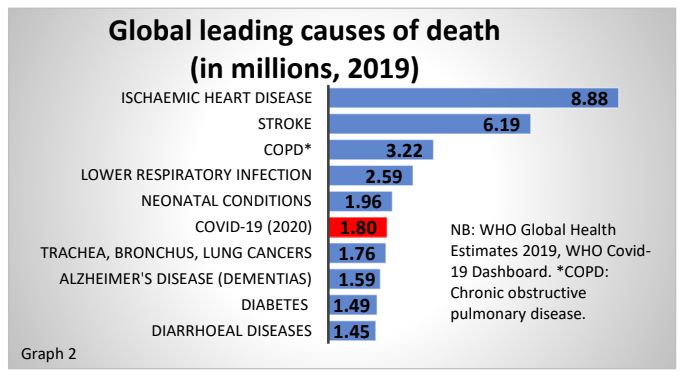TORONTO – “Equal opportunity for all” is an ideal that many strive for, yet disparities persist. Gender inequalities between men and women exist around the world in business, government and society. Advancing gender equality contributes to economic growth, social progress and sustainable national and cultural development.
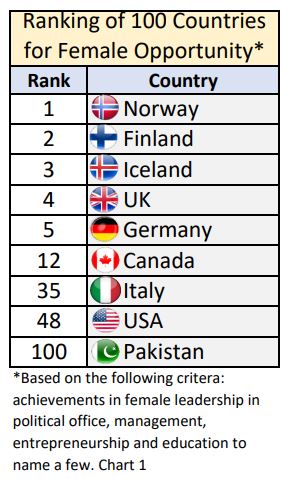
On December 1, 2020, the Digital Bank N26, released a study which measures female achievement and opportunity in one hundred countries around the world.
N26 is one of the first app-based (digital) banks. Launched in 2013, it aims to be the first app-only bank, globally.
The N26 study is not all-comprehensive but it lists the top-ranking countries open to females for opportunities measured by scores from a multitude of factors.
Norway ranked number one, followed by Finland is second place. Canada placed number twelve out of 100 countries, (chart 1).
Some of those factors include political and corporate leadership, gender wage gap, and female access to education.
Covid-19 has mitigated these factors. Nonetheless, it has also provided an opportunity to observe how female heads of government have managed their countries through the pandemic.
The N26 study revealed some interesting findings. For instance, by measuring Covid-19 deaths per one million inhabitants, it compared some female-led countries to male-led countries.
The data in the graph no. 2 reflects Covid-19 related fatalities as of November 22, 2020. Countries governed by female leaders (New Zealand, Norway and Finland), had remarkably lower death rates.
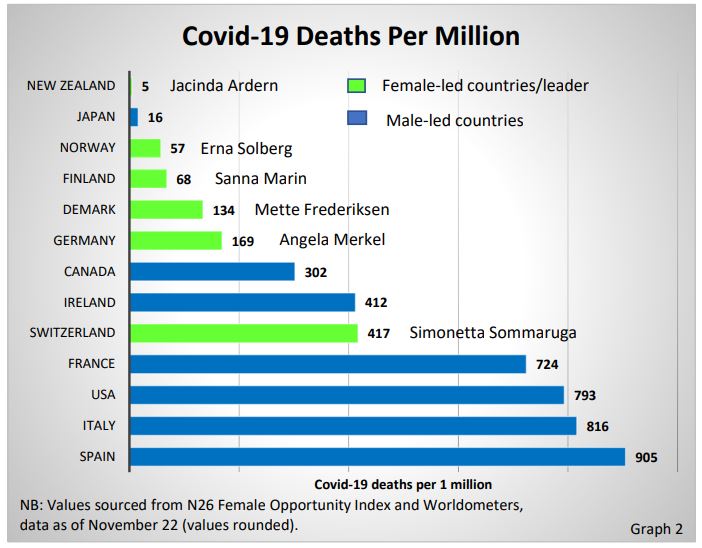
A male-led country like Japan, with a death rate of 15.6 per capita, had a rate measuring triple that of New Zealand’s 5.2 per million.
Countries similar in size of population – Ireland, with nearly fi ve million inhabitants – recorded a death rate of 412 per million, over eighty times that of New Zealand. It is tempting to conclude that “women have what it takes” to manage, especially during a crisis.
For instance, the first female Chancellor of Germany, Angela Merkel, is leading the country through the pandemic and registering a lower fatality rate, 168.9 per million, than countries of comparable size and industrial mix. The rate in the UK, 819.6 deaths per million, is nearly fi ve times that of Germany. What does it mean?
Among the wide range of leadership styles, some suggest women leaders might have an intangible technique that is different and beneficial. Others simply note the outcomes and encourage more female involvement in politics In ranking the countries with the highest score for women in government, the top grade goes to Rwanda, with a score of 100. Over 61% its of parliamentarians in the country are women. That is the highest percentage worldwide; but it is only one element in consideration.
The most powerful country in the world, the USA, has only just achieved a recent “female first”. In the 2020 US presidential election, Kamala Harris (in the pic above) was elected as the first female Vice-President in the history of the US.
Every nation strives for economic and social success. Advancing equal opportunities for all members of society may be the answer to achieving those goals.


